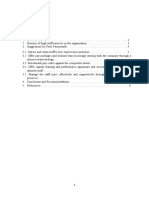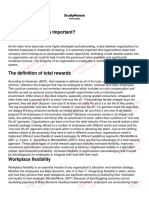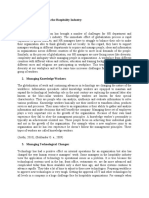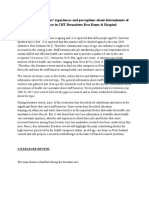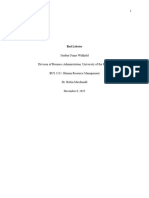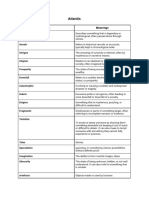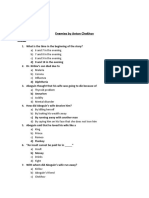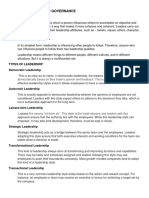Andalusia Medical Group was founded in 1984 by the businessman Dr.
Darwish Moustafa Zaqzouq as a
comprehensive medical facility to treat the health of the people. The most recent emergency, ambulance,
and ambulatory critical care units were added to the hospital along with more clinics and intensive care
for the sick, young patients, and the elderly. Andalusia Group for Medical Services grew over the course
of about 40 years, opening 11 branches throughout Saudi Arabia and Egypt and emerging as one of the
most reputable and innovative healthcare organizations in both nations. It also established in-house
businesses that provide construction, digitalization, and programming services to all hospitals and centers
( Andalusia, n.d.).
Andalusia is one of the popular healthcare in Jeddah that has lost most of its clients from governmental
and corporate accounts. Andalusia lost corporate accounts with a value of SAR 7 Million during 2017 and
during 2018 the loss increased up to SAR 9 Million. Several reasons led to this loss of the quality of
marketing and medical services due to the high turnover and failure to offer services at competitive
pricing among the competitors who started their business on a big scale in Jeddah which caused
nonsatisfaction of the Andalusia centers’ clients.
Additionally, the company received fines from the Ministry of Health due to patients complaints along
with fines from the Ministry of Labor due to employee complaints who didn’t receive their End of
service.
I was hired in Andalusia as a community marketing supervisor from 2019 to 2020 as a part of the
management changes to overcome the challenges that the company faces and this allowed me to deeply
witness the main challenges that Andalusia faced back then, these challenges
- Increase rate of customer loss
- Increase of Fines from the Ministry of Health
- Increase of Fines from the Ministry of Labor
The healthcare industries in Egypt and Saudi Arabia have experienced significant growth and
transformation in recent years. Due to its expanding population and shifting healthcare needs, the area has
unique challenges in providing quickly accessible, fairly priced, and excellent medical care (Ahmad,
2023).
The MENA region's healthcare sector has a number of difficulties, according to Ahmad (2023), including
the following:
- Resources and infrastructure: In several Middle Eastern countries, there are issues with the
healthcare infrastructure. While some nations boast cutting-edge healthcare facilities, others lack
the small-scale resources and infrastructure required to meet the growing demand for healthcare
among the populace.
- Human resources and brain drain: Some Middle Eastern countries have a significant reliance on
foreign medical professionals, which results in a loss of talent from the region's native population.
This reliance can lead to a shortage of competent labor and hinder the development of local
healthcare knowledge.
- Diseases associated with a lifestyle: In the Middle East, the incidence of diseases linked to a
certain lifestyle, such as diabetes, overweight, and cardiovascular disorders, has been rising. This
trend puts more strain on healthcare systems since it is fueled by a lack of physical activity,
accelerated urbanization, and changes in nutrition.
� - Healthcare funding: Obtaining funding for medical care is a major issue in the area. Some nations
struggle to provide their inhabitants with universal healthcare coverage due to budgetary
restrictions, while others have strong healthcare finance systems.
- Access and quality of healthcare: There are differences in healthcare availability and quality both
within and across Middle Eastern nations. Healthcare facilities are sometimes difficult to reach in
rural places, and the quality of care might differ greatly.
Client dissatisfaction at Andalusia facilities was driven by a number of factors, including excessive
turnover and rivals' inability to provide treatments at competitive prices. These factors contributed to the
loss of quality marketing and medical services.
In addition to being unhappy with the care they received, patients were also not happy with the way staff
members interacted with them. On the other side, management's lack of interest in or involvement with
the hospital staff members contributed to their subpar interactions with patients. Employees were
demotivated as a result of this lack of engagement, which negatively impacted how they interacted with
consumers and ultimately resulted in their discontent. Additionally, low productivity was a result of
management's lack of interest in listening to and resolving workers' complaints. Employees don't feel like
they belong at the company because of management's attitude, which Patrnchak (2015) claims displays a
lack of respect for workers' efforts.
The decline in patient experiences did not indicate that the clinic was offering lower-quality medical care;
rather, it indicated discontent with the manner in which staff members handled patients. They said they
didn't like it, even though people were still coming to the hospital due of innovation and technology.
Surveys used to gauge client happiness started to make this evident. The evaluation's findings indicated
that staff members were not sufficiently responsive and took too long to attend to customers' needs and
handle emergencies.
The ineffective way staff members interacted with patients throughout diagnosis and treatment was
another discovery (Patrnchak, 2015).
This is an ongoing problem that has been affecting every division of the company and is being addressed
at the highest levels by the leadership. There have been more and more reports of complaints and
investigations against Andalusia in recent years in addition to the profit loss. This issue was required all
departments' collaboration to investigate these issues and take quick actions to resolve them.
Moreover, this issue will require hard work from each department need to analyze its own issues, for
example, HR needs to start analyzing the turnover issues and change its current strategy, and the
marketing needs to take intensive action to recover the lost accounts and obtain new customers due to the
heavy competition. To guarantee future prevention, it is also important to talk about the role of human
resources in the organization's front-line leaders' training and development. Building consumer trust,
guaranteeing dependable items, and cutting expenses all depend on quality controls and appropriate
training (Simplilearn, 2023).
According to Maslow's hierarchy of wants, an employee's motivation level sharply declines if their
employer doesn't provide for their requirements for love and a feeling of community through friendship
with coworkers (Laegaard et al., 2006).
Moreover, the complexity of work due to the increment of the range of tasks demotivated the staff which
requires using one of the operational strategic techniques such as job simplification that seeks to minimize
the variety of duties in order to lower the complexity of the work (James, 2011).
The company decided to change the management with qualified people to improve productivity and the
quality of the offered services across marketing and operation medical staff following the below:
� Define Corporate Objectives: outlined a straightforward strategy for staying competitive, and
being relevant (Edwards, 2013).
Determine Marketing Strategy to Meet These Objectives: To regain market share, one must
decide whether to become a part of, initiate, or create an ecosystem (Edwards, 2013).
Assess how different products win against competitors: Cost, speed, and quality should be taken
into account when determining performance targets (Edwards, 2013).
Additionally, For managers and staff members to recognize their own emotional states and work-related
solutions, which might boost productivity, emotional intelligence is a critical skill. It is possible to acquire
and develop emotional intelligence (EI) via experience. EI is the capacity to recognize, regulate, and
assess feelings (Cherry, 2023).
HR made the decision to analyze and modify the current organizational strategy to encourage employees
to stay and perform in light of theoretical approaches to motivation in order to address the aforementioned
problems. Using the tactics listed below:
Motivational based on rational factors:
o Expectancy theory:
Developing the reward system (Laegaard et al., 2006).
Award for outstanding work (Laegaard et al., 2006).
Training the staff to overcome the current challenges (Laegaard et al., 2006).
o Self-Efficacy
The manager is responsible for setting clear expectations for the work of the staff and ensuring that any
unjustified fear of failure is thoroughly discussed (Laegaard et al., 2006).
o Management by Objectives
greater impact through more rigorous and regular performance management (Laegaard et al., 2006).
I had to apply the five whys approach to identify the root causes by asking "why" five times, or after each
subsequent response, which is a straightforward method for identifying the underlying source of an issue
(Okes, 2019).
1. Why is there an increase in the rate of customer loss? Because of the dissatisfaction of the patients
2. Why are patients not satisfied? Due to the low quality of services
3- Why are the services of low quality? Because of the high turnover
4- Why is there a high turnover? Because the staff are demotivated
5- Why is the staff demotivated? Because the management doesn’t take care of the staff
According to John et al (2013) study, Any healthcare service organization's present and future success is
significantly influenced by patient satisfaction. When clients are happy with the services provided, they
recommend their friends to use the same company. In our cutthroat corporate world, it is easy to ignore
�the importance of attending to the needs of employees, but the company must remember to do so.
Employers who prioritize employee happiness may boost morale among the workforce, reduce attrition,
and increase customer satisfaction. Overall patient satisfaction was found to be high, and patients were
found to be happy with both the behavioral and physical aspects of the therapy.
Leaders who have inspired the next generations of academics and clinicians have existed since the
beginning of clinical medicine. All of these leaders were seen to be very charismatic, but they were also
thought to be a little conceited and incapable of taking criticism while making decisions. In fact, this is
the fundamental idea behind the deeply embedded hierarchies that clinical medicine has always had. In
contemporary healthcare settings, where organizations are made up of intricate interactions between
several experts who have various duties to complete, this type of authoritarian leadership is difficult to
defend (Kumar, 2015).
In today's healthcare environments, healthcare practitioners must exercise effective leadership. This is
primarily supported by the need to raise the standard of healthcare delivery in light of the rising demand
for healthcare services as well as the need for greater productivity and efficiency. While there are a
variety of reasons why quality improvement initiatives fall short, medical staff resistance to change and a
lack of participation are among the most significant ones. When taking on leadership responsibilities,
clinicians must get beyond these obstacles and develop a leadership style that is accommodating to the
demands of other healthcare professionals. But in the end, quality improvement is most likely to be
created and maintained by a team leadership approach (Kumar, 2015).
Change can be impeded by the distinct structure of healthcare organizations, despite the fact that effective
leadership is essential to implementing the changes required for quality improvement (Kumar, 2015).
The power structure in healthcare organizations is asymmetrical, meaning that those at the bottom (such
as hospital consultants) have more influence over decisions than those at the top. Recognizing this and
overcoming the significant resistance to change (such as deeply embedded work practices and cultures)
that an inverted power structure fosters are essential for successful leadership in the healthcare industry
(Kumar, 2015).
One of the leadership theories that are effective in healthcare industries is the Transformational theory,
Transformational leadership is the capacity of leaders, including those who do not hold positions of
power, to impact others by changing the way they behave (Fischer et al, 2022).
Transformational leaders prioritize the needs of their healthcare staff over their own interests, making
them genuine change agents. Getting professionals to support a vision and let them spearhead the
transformation process is probably going to yield better results than other strategies. Transformational
leaders accept and address opposition to change rather than trying to overcome it (Kumar, 2015).
Furthermore, if healthcare personnel feel that they are taking ownership of the task, quality improvement
programs have a higher chance of success (Kumar, 2015).
The CEO of the company at that time was always pushing the leaders to solve the mentioned issues and
putting them under pressure. The company leaders tried to make some changes, but it seems that they lack
the capability to manage crises, which required them to make some changes.
Conclusion:
Effective leadership and a focus on staff well-being may greatly enhance patient satisfaction and
organizational performance, even in the face of greater issues that the healthcare business faces, such as
shifting demographics and resource constraints.
�References:
Ahmad, S. (2023). The healthcare industry in the Middle East: Challenges and opportunities.
https://www.arabianbusiness.com/powerlists/the-healthcare-industry-in-the-middle-east-challenges-and-
opportunities
Andalusia. (n.d). Our Story. https://andalusiagroup.net/about/out-story.
Cherry, K. (2023). Emotional Intelligence: How We Perceive, Evaluate, Express, and Control Emotions.
https://www.verywellmind.com/what-is-emotional-intelligence-2795423#:~:text=Some%20researchers
%20suggest%20that%20emotional,to%20the%20emotions%20of%20others
Edwards, J. (2013). All Microsoft employees should read Stephen Elop's 'Burning Platform' memo right
now. https://www.businessinsider.com/stephen-elops-burning-platform-memo-2013-9
Fischer, H., Heidler, P., Coco, L., Albanese, V. (2022). Leadership Theories and the Veterinary Health
Care System. https://www.ncbi.nlm.nih.gov/pmc/articles/PMC9610283/
James, T. (2011). Operations Strategy. https://my.uopeople.edu/pluginfile.php/1600433/mod_page/
content/10/BUS5116James.pdf
John, S., Sharma, R., and Dhingra, M. (2013). Role of Employee Satisfaction in Influencing Patient
Satisfaction. https://www.jrfhha.com/doi/JRFHHA/pdf/10.5005/jp-journals-10035-1003
Kumar, R., Khiljee, N. (2015). Leadership in healthcare.
https://www.vumc.org/faculty/sites/default/files/leadership%20in%20healthcare.pdf
Laegaard, J. & Bindslev, M. (2006). Organizational Theory. Bookboon.com
Okes, D. (2019). Root cause analysis, second edition: The core of problem solving and corrective action.
ASQ Quality Press. [Access the reading from the eBook central].
Patrnchak, J. M. (2015). Implementing Servant Leadership at Cleveland Clinic: A case study in
organizational change. https://csuepress.columbusstate.edu/cgi/viewcontent.cgi?
article=1003&context=sltp/
Simplilearn. (2023, August 29). What is quality control: Definition, benefits, examples, and more.
https://www.simplilearn.com/what-is-quality-control-article


